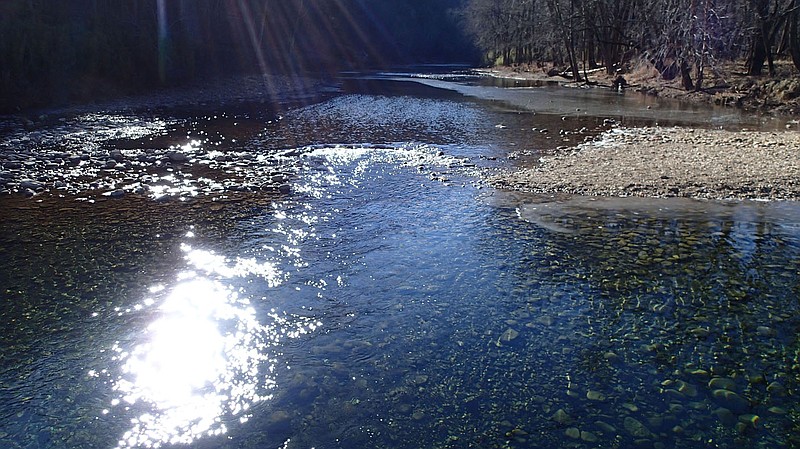Backpaddling can be an essential technique for canoeists or kayakers trying to navigate a river. Among its benefits is an ability for the paddler to change directions once it's clear his initial path forward proved unworkable or too perilous.
Backpaddling can work for government agencies, too.
It's a skill employed a few days ago by the National Park Service, which is responsible for the day-to-day protection and generational preservation of the Buffalo National River.
The agency issues prospectuses to solicit contracts for concessionaires to provide services within its parks. At the Buffalo, those concessionaires include the outfitters who rent canoes and kayaks to visitors and help transport them to put-ins or from take-out points along the river.
That may sound like a simple task, but the terrain that makes the river and the natural spaces around it so attractive to outdoors lovers makes for difficult transportation. Hauling paddlers to and fro requires piloting larger vehicles, usually hauling trailers, down rough and narrow unpaved roads, some of them steep. Rivers, after all, don't stay on the tops of mountains; they gravitate toward the lower points. Dispersing and collecting paddlers along the river isn't for the feint of heart.
These contractors have also provided another service: shuttling the private vehicles of floaters to locations up and down the river. Why? For many visitors, the last thing they want after a long day on the river is to be forced to wait on other paddlers to show up before they can all be transported back to the concessionaire's home base. And they'd rather have their own vehicle waiting for them at the take-out point so they can immediately begin their journey home or wherever they're headed.
On Nov. 6, the National Park Service issued a prospectus that would, as of 2026, no longer allow concessionaires to shuttle private vehicles, potentially ending a practice that's existed since the Buffalo became the nation's first national river in 1972. The change would have forced the outfitters to shuttle everyone using their buses or vans.
What did the agency have in mind? Easing the vehicle congestion at the access points along the river while "mitigating park resource damage."
As soon as the prospectus arrived, the folks who operate along the Buffalo River began asking lots of questions. The terrain to get to some access points requires four-wheel drive vehicles with high clearances. Buses and vans usually aren't so equipped.
Concession holders told this newspaper the National Park Service needed more funding to improve roads, parking lots and access to restrooms, but the agency doesn't have the money. "This is their way of doing it, to constrain the concessionaires more," said Austin Albers, president/owner of Buffalo Outdoor Center in Ponca.
Amid all the operational uncertainties, there remained the question of whether the service levels envisioned by the National Park Service would meet visitor expectations or demands. Concessionaires asked whether the agency had considered that park visitors might shuttle their own vehicles if the concession holders aren't permitted to do it. That, they said, could lead to more traffic and parking problems.
Those sorts of concerns led last week to the aforementioned backpaddling. The federal agency notified interested parties it had canceled, for now, the prospectus for services on the river after 2026. The reason: "The high level of interest and questions." It probably didn't hurt, either, that U.S. Rep. Bruce Westerman questioned the National Park Service's deputy director during a Nov. 30 congressional hearing about the change.
We credit the National Park Service for recognizing when the current is flowing against it.
It reminds us of the turmoil created when locals learned Walton family interests (of Walmart fame) had been in discussions for more than a year gauging whether the national river might be changed into a full-scale national park. Whether the idea has any merit didn't matter so much as the fact the discussions had been going on so long before the public found out about them.
Likewise, the National Park Service easily could have promoted some less formal discussions with the 12 vendors who provide services along the river. They could have given them a chance to offer their insights on the challenge and perhaps come up with alternatives. Instead, the agency caught everyone off guard with a formal prospectus that seemed like a done deal.
Anyone who has floated the river knows its possible to choose the wrong path and find their canoe scraping rocky terrain in the shallows rather than the deeper water just a few feet away. The trick is to get back on the right path as quickly as possible. The National Park Service thankfully recognized it needed to change directions.
Let's hope next time it asks a few questions before launching a new prospectus.

